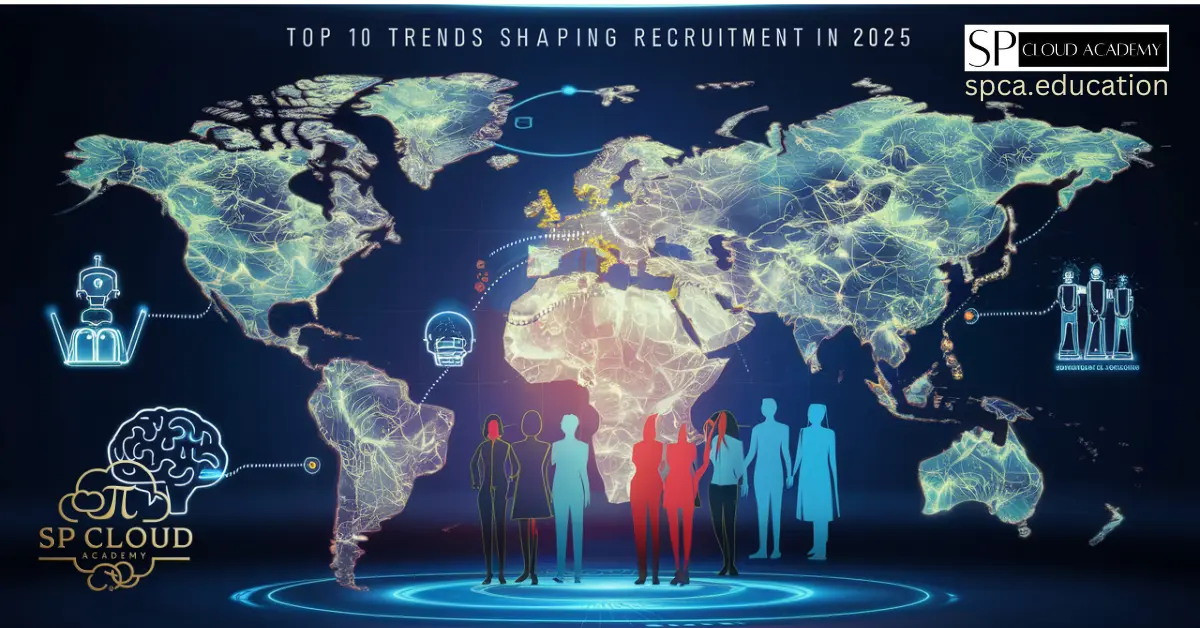Introduction: The Evolution of Recruitment
The recruitment landscape is undergoing rapid transformation. Advances in technology, societal changes, and a shift in workplace expectations are reshaping how companies attract and retain talent. As businesses compete for skilled workers, understanding emerging trends becomes critical.
By 2025, recruitment strategies will be deeply influenced by technology, remote work preferences, and a growing emphasis on diversity and sustainability. This article explores the top 10 trends shaping hiring practices and offers insights on how organizations can stay ahead.
The Role of Technology in Modern Recruitment
Technology plays a pivotal role in redefining recruitment. From AI-powered tools to data analytics, hiring processes are becoming more efficient and targeted. Companies leveraging these tools can access wider talent pools and make informed decisions based on real-time data.
This integration not only enhances efficiency but also improves the overall candidate experience, setting the stage for the trends discussed below.
Trend #1: Artificial Intelligence (AI) in Talent Acquisition
Automation in Resume Screening
Manual resume screening is a thing of the past. AI tools can analyze thousands of applications in seconds, identifying candidates with the right qualifications. This reduces bias and ensures a fair assessment process.
AI in Candidate Matching
AI algorithms match candidates to job descriptions with precision. These tools consider skills, experience, and even cultural fit, helping recruiters identify the best candidates quickly.
Trend #2: Remote and Hybrid Work Recruitment Strategies
Adapting Job Descriptions for Remote Roles
Remote and hybrid work models demand a new approach to job descriptions. Recruiters now emphasize flexibility, self-management skills, and digital proficiency in job postings.
Virtual Interviews and Onboarding
Virtual interviews and onboarding programs are becoming the norm. Companies are investing in platforms that create seamless remote hiring experiences.
Trend #3: Employer Branding as a Recruitment Differentiator
Leveraging Social Media
In 2025, social media remains one of the most powerful tools for employer branding. Platforms like LinkedIn, Instagram, and even TikTok are being utilized to showcase workplace culture, employee stories, and career growth opportunities. Companies that maintain an authentic online presence attract more candidates.
The Importance of Employee Testimonials
Employee testimonials and reviews on sites like Glassdoor or Indeed play a critical role in shaping a company’s reputation. Candidates increasingly value transparency and want to hear firsthand experiences from current or past employees. Investing in strong internal communications can encourage employees to share positive feedback publicly.
Trend #4: Data-Driven Recruitment Decisions
Predictive Analytics in Hiring
Data analytics is revolutionizing recruitment by enabling predictive hiring. Tools can assess a candidate’s potential performance based on historical data, personality tests, and even social media behavior. This approach minimizes guesswork and focuses on candidates likely to excel in specific roles.
Metrics for Measuring Recruitment Success
Metrics like time-to-hire, quality-of-hire, and candidate satisfaction are becoming standard. Recruiters use these data points to refine strategies, ensuring they align with organizational goals. For example, a high-quality hire metric can indicate long-term employee retention and satisfaction.
Trend #5: Diversity, Equity, and Inclusion (DEI) Initiatives
Expanding Outreach to Diverse Talent Pools
Organizations are actively broadening their talent search to include underrepresented groups. Partnerships with community organizations, targeted job fairs, and outreach to minority-serving institutions are some ways companies are diversifying their applicant pools.
Bias-Free Recruitment Processes
Technological advancements are helping reduce biases in recruitment. AI-powered tools designed to eliminate gendered language in job descriptions and anonymized resume screening systems are making recruitment more equitable.
Trend #6: The Rise of Gig and Contract Work
Navigating Short-Term Projects
The gig economy is thriving, with more professionals opting for freelance or contract roles over traditional employment. Companies are adopting flexible hiring models to meet project-specific needs while also attracting gig workers with competitive compensation packages.
Legal and Compliance Considerations
As gig work increases, companies face unique legal challenges. Compliance with local labor laws, proper classification of independent contractors, and offering fair work terms are critical to avoiding disputes and maintaining a positive reputation.
Trend #7: Upskilling and Reskilling Employees
Building Learning Ecosystems
Companies are prioritizing internal talent development by creating robust learning ecosystems. Learning management systems (LMS) and on-the-job training programs help employees acquire new skills and prepare for emerging roles.
Partnerships with Educational Institutions
Collaborating with universities and online learning platforms, organizations can offer tailored courses to employees. This not only enhances workforce capabilities but also reduces costs associated with external hiring.
Trend #8: Mobile Recruitment and Candidate Experience
Optimizing Job Applications for Mobile Devices
With over 90% of job seekers using mobile devices, companies must ensure their application process is mobile-friendly. Streamlined forms, one-click applications, and responsive career websites are essential for attracting tech-savvy candidates.
Enhancing Communication Through Apps
Recruitment-specific apps and communication tools like chatbots provide real-time updates to candidates. This improves the overall experience, reducing the frustration often associated with long hiring processes.
Trend #9: Social and Environmental Responsibility in Hiring
Green Recruitment Practices
Sustainability is a top priority for both companies and candidates. Green recruitment practices—such as paperless processes, promoting remote roles to reduce carbon footprints, and emphasizing sustainability in job roles—are gaining traction.
Social Impact as a Candidate Magnet
Candidates increasingly want to work for organizations that prioritize social responsibility. Highlighting initiatives like volunteering programs, ethical supply chains, or community outreach in job postings can attract purpose-driven individuals.
Trend #10: The Role of Recruitment Marketing
Crafting Targeted Campaigns
Recruitment marketing involves creating strategic campaigns to attract top talent. Personalized content, targeted ads, and engaging video testimonials are part of successful campaigns that resonate with the right audience.
Utilizing Content Marketing in Recruitment
Organizations are adopting content marketing techniques to educate and engage potential candidates. Blogs, webinars, and newsletters that provide industry insights or career tips position companies as thought leaders, enhancing their appeal to job seekers.
Conclusion: Preparing for the Future of Recruitment
The future of recruitment is exciting and dynamic. By embracing technology, prioritizing diversity, and aligning with societal values, companies can remain competitive in attracting top talent. Staying ahead of these trends requires adaptability and a commitment to innovation.
Organizations that focus on candidate-centric approaches, leverage data-driven tools, and invest in upskilling will not only succeed in 2025 but will also set new benchmarks in hiring excellence.
Books
- Recruiting 101: The Fundamentals of Being a Great Recruiter
- The Secrets of Great Recruitment: How to Recruit Great Employees
- Automatic Recruitment Agency: Scale to seven figures while working less
- Recruitment Made Simple: 7 Key Strategies for Success in Healthcare Recruiting
See Also
-

Graphic Design Career
-

Software Engineering Career
-

Career in computer networking
-

Web Development Career
-

Personal Branding in IT career
-

Freelancing and Remote IT Careers
-

Cloud Computing Career Planning and Development
-

Characteristics and effectiveness of new era IT Training Providers
-

CompTIA A+ Certification
